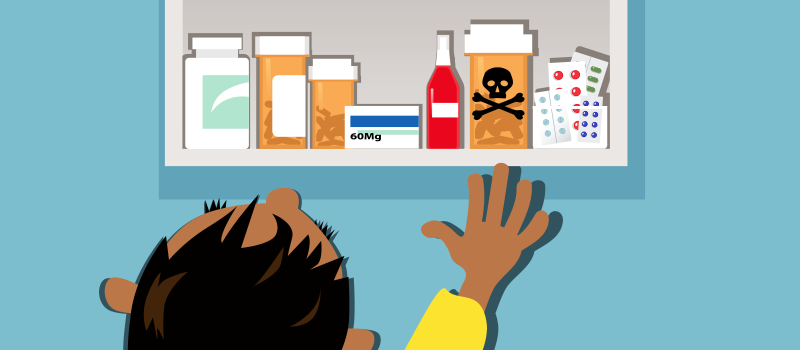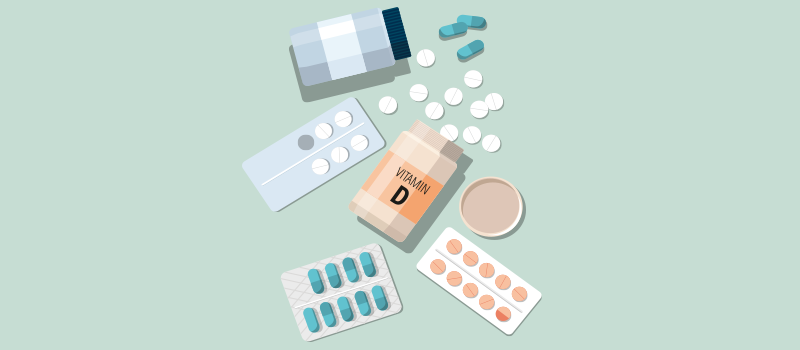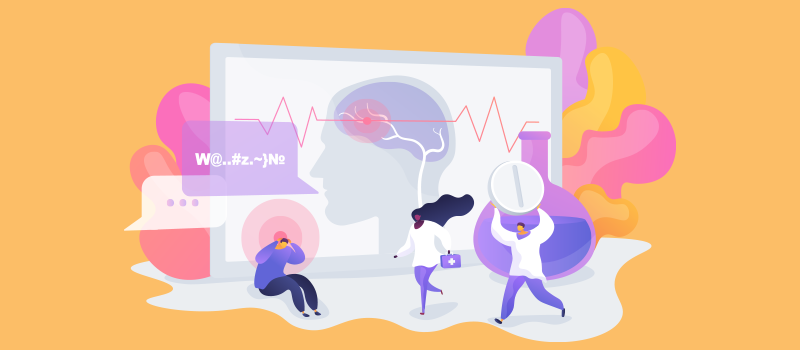What’s the Buzz
The Bee Healthy Blog
Top Seizure Medications Compared

Epilepsy is a disorder of the brain tissue that causes seizures (convulsions) due to abnormal electrical activity. Approximately 3.4 million adults and children in the US are living with epilepsy. Various factors can trigger seizures, such as a traumatic brain injury, brain tumor, stroke, or central nervous system (CNS) infection. The type of seizures a person experiences can vary, such as focal seizures, grand mal seizures (generalized tonic-clonic seizures), partial onset seizures, and petit mal seizures (absence seizures).
Various anti-seizure drugs are available to treat epilepsy. In many cases, seizures are under control after starting drug treatment, typically one or two seizure medications. However, finding the best seizure medication can be challenging. You may have to try several antiepileptic drugs before you find the ones that control your seizures without causing side effects. Please continue reading to learn more about medications used to control seizures.
What is the most effective seizure medication?
The most effective anti-seizure medication is the one that can suppress seizures with minimal adverse effects. The choice of seizure medication depends on the type of seizures you have as well as your response and tolerability to an antiepileptic drug. In other words, drug treatments that work well for someone else may not work as well for you.
The following medications are used for seizure control. Your healthcare provider will prescribe one or more of these common seizure medications depending on your type of seizure disorder. In case of treatment failure due to the ineffectiveness of medication or severe side effects, your provider will try you on other seizure medications to obtain the best seizure control.
Older antiseizure medications
- Phenobarbital is one of the oldest antiepileptic medications. It is used to treat simple partial seizures, complex partial seizures, and generalized epilepsy (generalized tonic-clonic seizures or grand mal seizures).
- Phenytoin is used to treat generalized tonic-clonic seizures, focal onset impaired awareness or complex partial seizures, and status epilepticus (prolonged seizures).
- Carbamazepine is used to treat partial seizures and tonic-clonic seizures.
- Ethosuximide is used to treat typical and atypical absence seizures.
- Valproic acid is one of the broad-spectrum AEDs. It is used to treat simple partial seizures (focal aware seizures), complex partial seizures (focal impaired awareness seizures), myoclonic seizures, juvenile myoclonic epilepsy, atonic seizures, Lennox-Gastaut syndrome, temporal lobe epilepsy, refractory epilepsy, and secondarily generalized seizures.
Newer antiepileptic drugs
- Lamotrigine is used to treat partial seizures, tonic-clonic seizures, and Lennox-Gastaut syndrome.
- Oxcarbazepine is used to treat simple and complex partial seizures, tonic-clonic seizures, secondarily generalized seizures or bilateral tonic-clonic seizures, and temporal lobe epilepsy.
- Topiramate is used to treat primary generalized tonic-clonic seizures (grand mal seizures) and partial onset seizures.
- Gabapentin is used to treat partial and secondary generalized tonic-clonic seizures.
- Levetiracetam is used to treat partial seizures, myoclonic seizures, and tonic-clonic seizures.
- Vigabatrin is used to treat simple and complex partial seizures, secondarily generalized seizures, refractory epilepsy, and infantile spasms (West’s syndrome).
- Diastat (diazepam rectal gel) is a rescue medication that is used to treat a cluster of seizures.
What are common side effects of antiepileptic drugs?
Common adverse effects of antiepileptic drugs include dizziness, drowsiness, slowed thinking, and weight gain. More serious adverse effects such as Steven-Johnson syndrome, a severe skin reaction, liver toxicity, kidney stones, metabolic acidosis, angle-closure glaucoma, and movement and behavior disorders can occur. Antiepileptic medications are also associated with an increased risk of birth defects.
What is the best seizure medication with the least side effects?
There is no clear guideline containing a ranking of seizure medications. Certain seizure medicines will work better for you than other medications. As noted above, certain medications work well for certain seizure types. Your individual response to a medicine and its ability to prevent seizures will also vary. Your doctor may prescribe a seizure medication that would work for you immediately. However, there are cases where people have to try several medications before finding the appropriate treatment with the least side effects.
Clinical trials have not shown that any one drug causes fewer side effects than other seizure medications. In general, the newer antiepileptic drugs such as topiramate, lamotrigine, levetiracetam, and vigabatrin are safer and better tolerated with fewer adverse events than some of the older antiepileptic drugs such as phenobarbital, phenytoin, valproic acid, and carbamazepine.
If one medicine does not control your seizures, your doctor will initiate a second drug as an add-on treatment. Another option is to start you on a brand new regimen with one or more medications. Eventually, you and your healthcare provider should be able to find the best seizure medication to control your seizures. It is worth noting that antiepileptic drugs do not cure epilepsy. They control seizure activity as long as you take the medicine.
Is there a good alternative to Keppra?
Keppra and Keppra XR are brand name drugs that contain levetiracetam as the active ingredient. If cost is a factor, the generic substitution can be an option. If Keppra has not been able to control seizures, other medications to try are carbamazepine (Tegretol) or lamotrigine (Lamictal) for partial onset seizures and sodium valproate (Depakote) or lamotrigine (Lamictal) for generalized tonic-clonic seizures.
What are the newest drugs in the treatment of seizures?
Some of the newer-generation antiepileptic medications (FDA approval was given in the 2000’s) include:
- XCorpi (cenobamate) — FDA-approved for treatment-resistant partial-onset seizures in adults in November 2019
- Epidiolex (cannabidiol) was the first plant-derived, purified pharmaceutical-grade cannabidiol (CBD) medication. Epidiolex was approved for patients 2 years and older with Lennox-Gastaut syndrome (LGS) or Dravet syndrome (DS) and refractory epilepsy.
References:
- https://www.cdc.gov/epilepsy/about/fast-facts.htm#:
- https://www.mayoclinic.org/diseases-conditions/seizure/symptoms-causes/syc-20365711
- https://www.ncbi.nlm.nih.gov/pmc/articles/PMC3002630/
- https://emedicine.medscape.com/article/1187334-overview
- https://www.epilepsy.com/tools-resources/seizure-medication-list/phenobarbital#
- https://www.ncbi.nlm.nih.gov/books/NBK551520/#
- https://www.mayoclinic.org/drugs-supplements/carbamazepine-oral-route/side-effects/drg-20062739?p=1#
- https://medlineplus.gov/druginfo/meds/a682327.html#
- https://www.epilepsy.com/tools-resources/seizure-medication-list/valproic-acid
- https://www.mayoclinic.org/drugs-supplements/lamotrigine-oral-route/side-effects/drg-20067449?p=1#
- https://www.epilepsy.com/tools-resources/seizure-medication-list/oxcarbazepine
- https://medlineplus.gov/druginfo/meds/a697012.html#:
- https://www.ncbi.nlm.nih.gov/pmc/articles/PMC3263084/#:
- https://www.mayoclinic.org/drugs-supplements/levetiracetam-oral-route/side-effects/drg-20068010?p=1
- https://www.epilepsy.com/tools-resources/seizure-medication-list/vigabatrin#
- https://pubmed.ncbi.nlm.nih.gov/17173601/#:
- https://evidence.nihr.ac.uk/alert/a-range-of-anti-epilepsy-drugs-are-effective-as-first-line-treatment/












SOCIAL